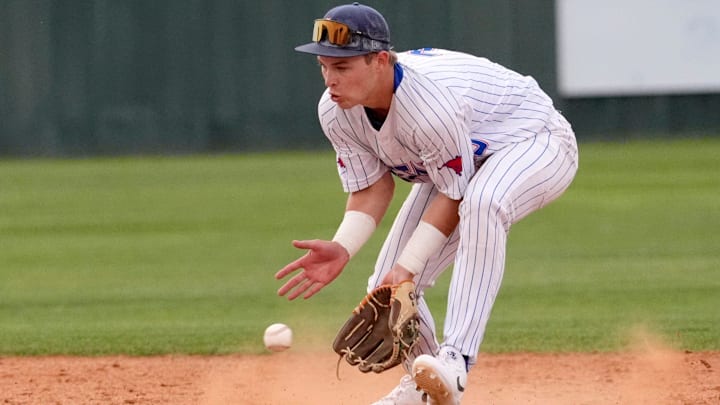It took exactly one pick for the 2025 MLB Draft to get sent off the rails. For weeks, everyone thought the Washington Nationals were debating between the top prep prospect, infielder Ethan Holliday, and the top college pitcher, LSU ace Kade Anderson, with the No. 1 overall pick. But when the time came, the Nats swerved hard, instead taking different shortstop from Oklahoma, Eli Willits.
It's safe to say that absolutely no one saw this coming. Willits was universally regarded as a top-10, or even top-five, prospect in this class. But hardly anyone had him at the level of Holliday, for example, or a fast-moving pitcher like Anderson. Which begs the question: Just what is Washington doing here?
Well, saving money, for one thing. Taking Willits allowed the Nationals to avoid negotiating a signing bonus with agent Scott Boras, and pouring those savings back into the rest of their draft class. But savings only go so far; eventually, you need players who are, you know, good at baseball. So, what is Washington getting here? Let's take a deep dive into what made Willits so intriguing at the top of the draft.
For more news and rumors, check out MLB Insider Robert Murray’s work on The Baseball Insiders podcast, subscribe to The Moonshot, our weekly MLB newsletter, and join the discord to get the inside scoop during the MLB season.
Eli Willits scouting report: What Nationals are getting in No. 1 pick
It's easy to see how an organization might fall in love with Willits, who MLB Pipeline had ranked as their No. 5 overall prospect in this class. For starters, he's advanced beyond his years as a hitter, with prodigious contact skills and an excellent command of the strike zone. There isn't much power in his profile — he might not ever hit more than 10-15 homers at the big-league level — but he sprays line drives all over the field, and it's not hard to imagine him hitting .300 one day.
He also brings the potential for quality defense at shortstop. He's not a top-of-the-scale athlete, but he's plenty fast and quick enough, and he helps his physical tools play up thanks to a motor that never stops running and great instincts for his age. He's just a smart, hard-nosed, all-around baseball player, and there's nothing wrong with that.
Of course, there is some downside risk here. His hit tool is going to have to really carry his offensive profile, and there's just no way to know how any player will respond to the increase in competition from the prep ranks to the upper Minors and beyond. If he gives back even a little bit of his contact skills, this all of a sudden becomes a risky profile, and he'll likely top out as a solid regular, a bottom-of-the-order bat with good defense at short, rather than an All-Star. Only time will tell.
How does Eli Willits compare to Jackson Holliday?
The contrasts here are fascinating. Holliday is a 6-foot-4 lefty with an effortless swing and light-tower power who will likely be confined to third base as he ages. Willits, meanwhile, stands 6-foot-1 at best, and his offensive value will come entirely from his ability to run a high average.
Willits will almost certainly bring more value defensively and on the bases; he projects to stick at short over the long haul, and he's certainly faster. But there's a reason why Holliday was ranked above Willits on just about everyone's board pre-draft: While he comes with more swing-and-miss and worse contact skills, he does far more damage at the plate, and that gives him far more margin for error when it comes to providing offensive value in the Majors one day.
Holliday's ceiling is 35-40 homers with a decent average and bundles of walks. But even if he strikes out a bit more than expected, that power can still play, especially if he sticks at third over the long haul like most expect. Willits, on the other hand, has very little margin for error; his hit tool is the riskier proposition — it's harder to project a player to hit than it is to project their raw and game power — and if he slips up, Nats fans could be living this draft down for years.
